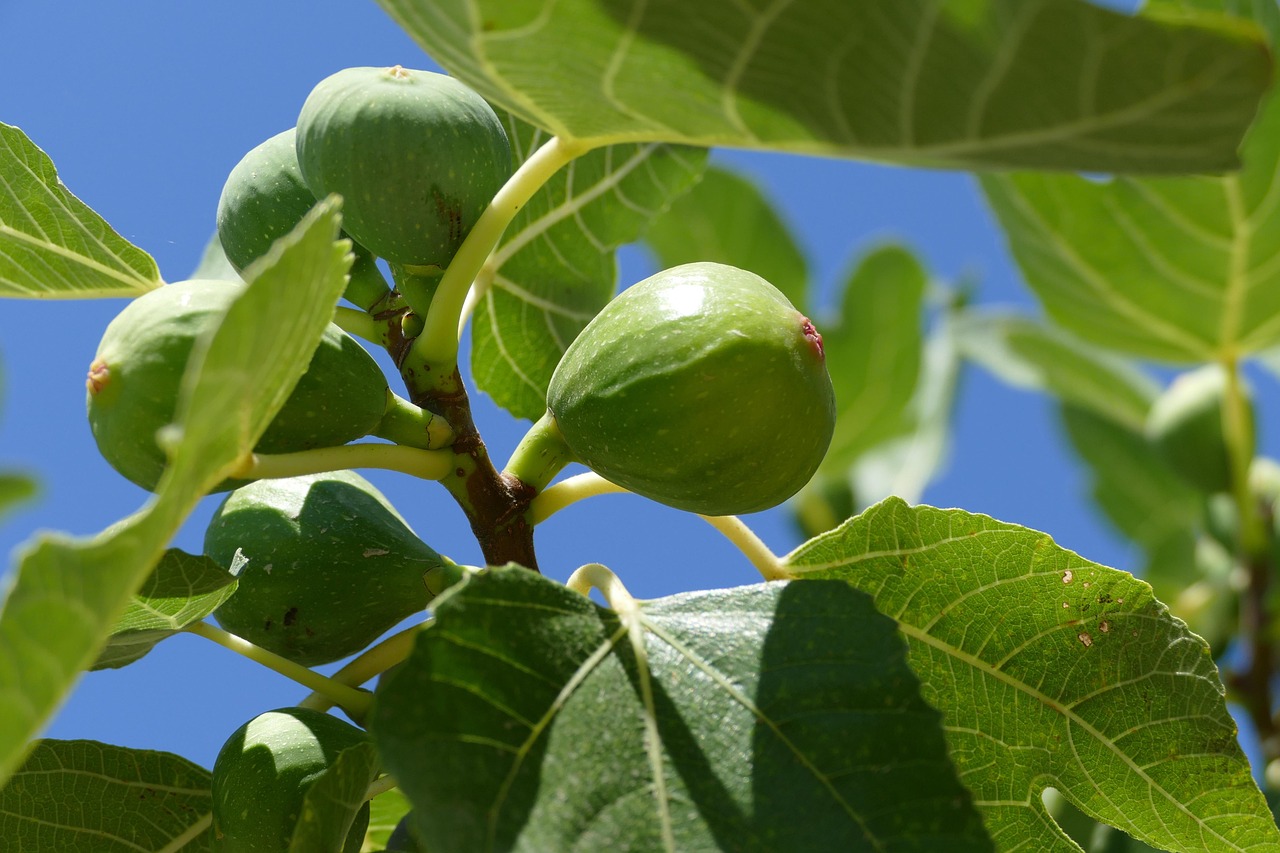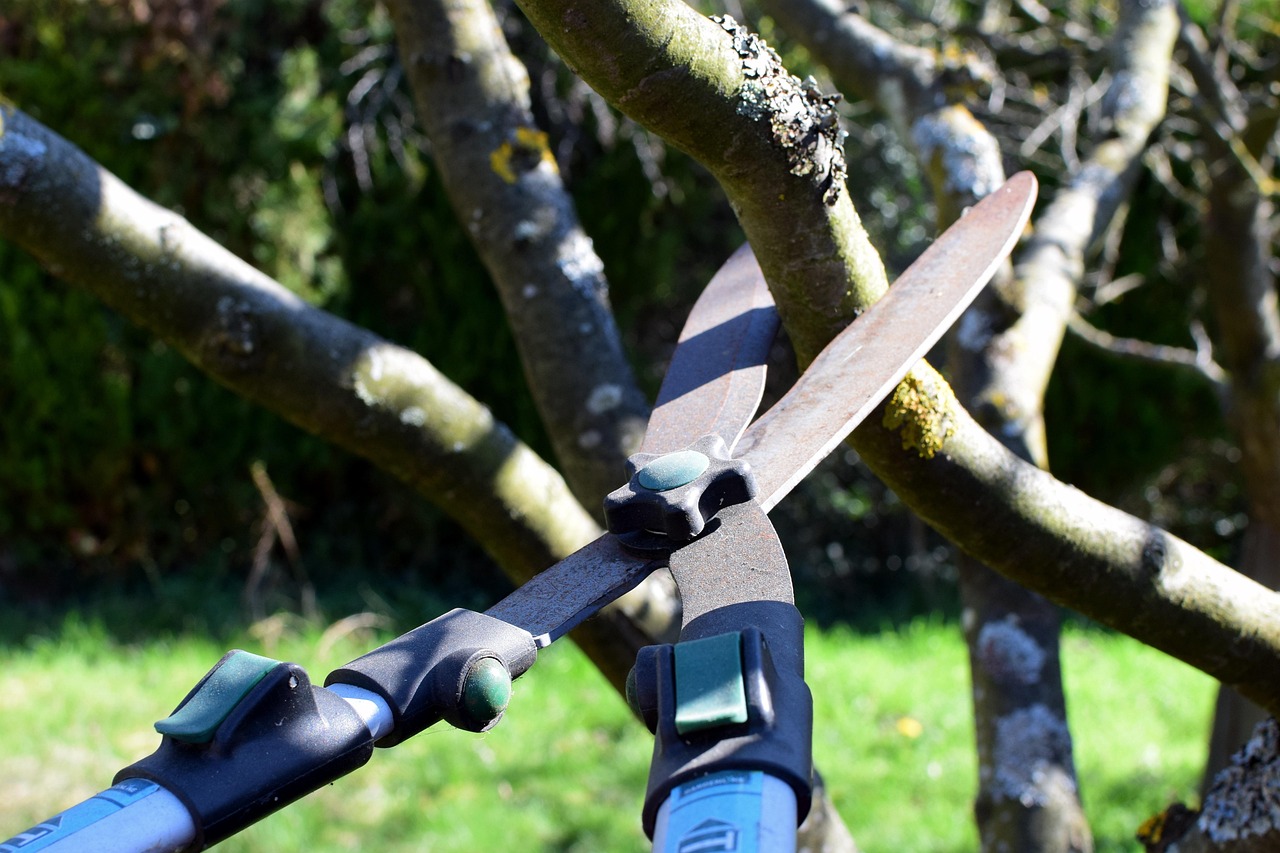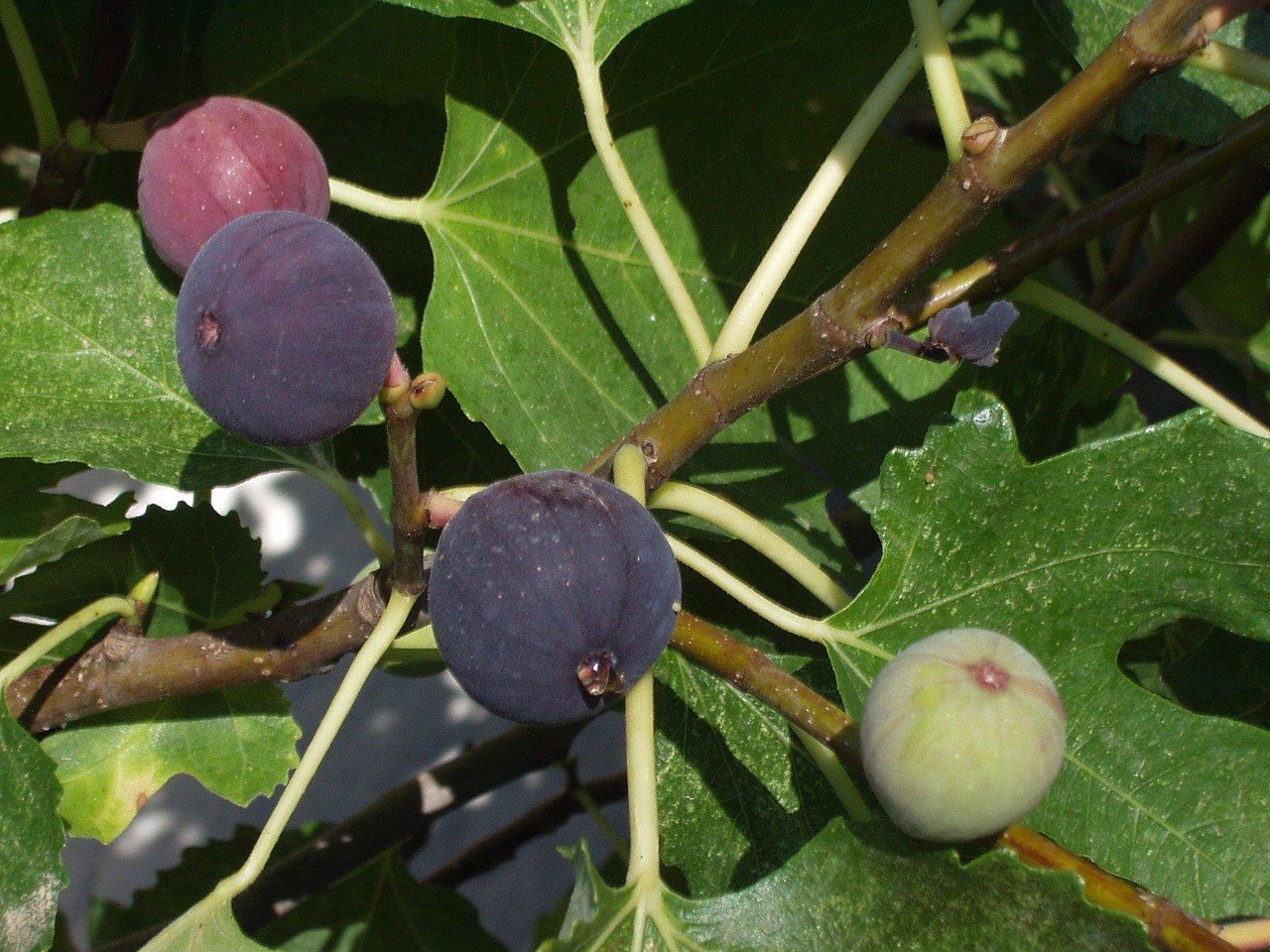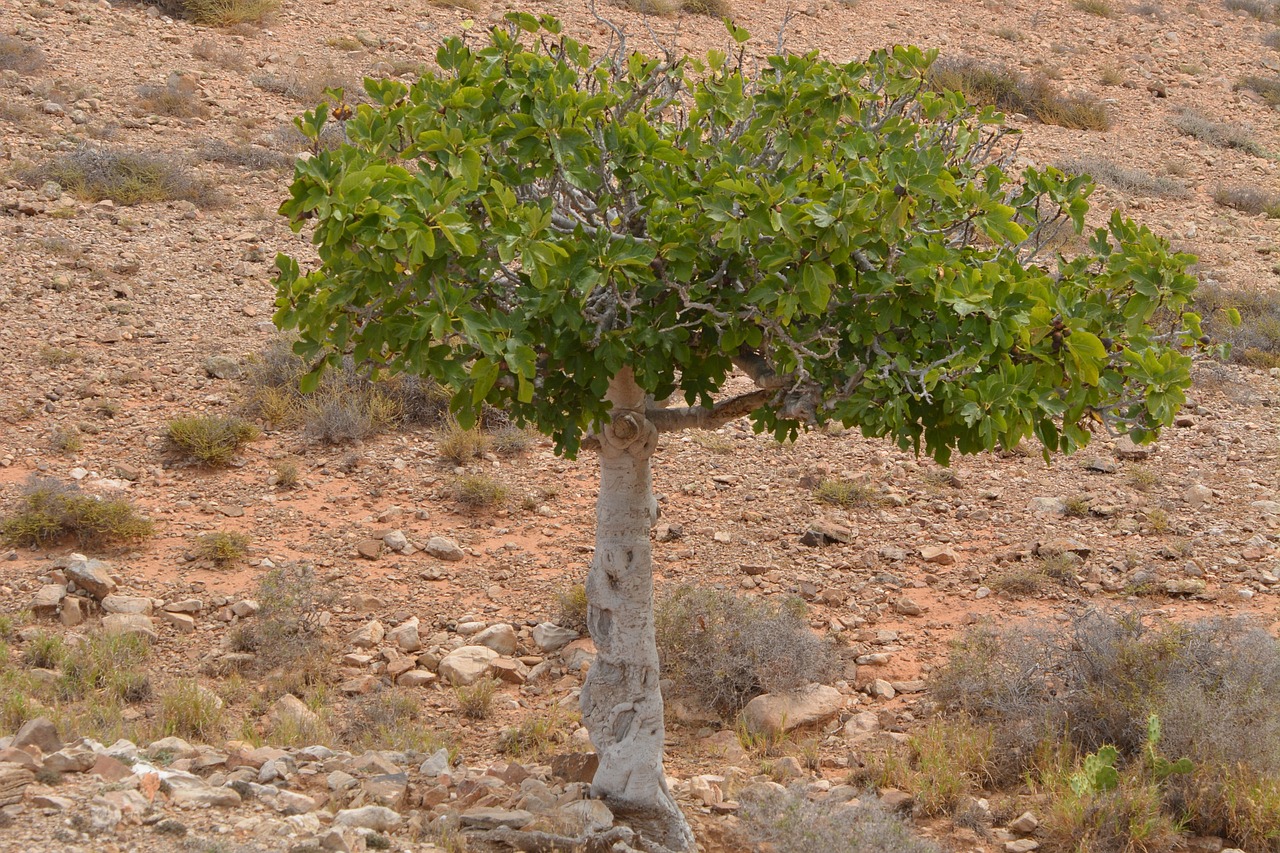Pruning young fig trees is essential for promoting quick and early fruiting. Proper pruning techniques enhance air circulation, encourage healthy growth, and help develop a strong structure, ultimately leading to a more fruitful harvest.
Fig trees are cherished for their sweet, succulent fruits and beautiful foliage. When planted, these trees often require some care to ensure they thrive. One of the most important aspects of fig tree care is pruning, particularly when the trees are young. Pruning at the right time and in the right way can significantly affect the tree’s growth and fruiting capabilities.

Young fig trees typically benefit from pruning during their first few years. This period is crucial for establishing a strong foundation for future growth and fruit production. Proper pruning techniques can help shape the tree, remove any weak or damaged branches, and promote better fruiting. Moreover, pruning encourages the development of a sturdy framework that can support heavy fruit clusters.
Understanding Fig Tree Growth
To effectively prune a young fig tree, it is essential to understand how these trees grow. Fig trees can be classified into two main categories: those that produce fruit on new growth and those that bear fruit on old wood. Most common varieties, such as the Brown Turkey and Celeste, produce fruit on new wood, making timely pruning vital.
The growth cycle of fig trees involves several stages:

- Spring Growth: During this season, new shoots emerge rapidly as the tree awakens from dormancy.
- Summer Development: The tree continues to grow, developing leaves and fruit buds.
- Late Summer to Early Fall: This is when the figs begin to mature and ripen.
- Winter Dormancy: The tree enters a dormant phase, during which it requires minimal care.
Understanding this cycle helps determine the best times for pruning. Ideally, pruning should take place in late winter or early spring before the new growth begins. This timing allows the tree to heal quickly and encourages vigorous growth throughout the spring and summer months.
Benefits of Pruning Young Fig Trees
Pruning young fig trees offers numerous benefits. Here are some of the key advantages:
- Improved Air Circulation: By removing excess branches, air can flow freely around the tree. This reduces the risk of fungal diseases.
- Better Sunlight Exposure: Pruning opens up the canopy, allowing sunlight to reach all parts of the tree, which is vital for healthy photosynthesis.
- Stronger Structure: A well-pruned tree develops a strong framework, reducing the likelihood of branches breaking under the weight of fruit.
- Enhanced Fruit Production: Targeted pruning encourages the tree to focus energy on producing high-quality fruit rather than excessive foliage.
Essential Pruning Techniques
When it comes to pruning young fig trees, there are several techniques to consider. Each method serves a specific purpose in promoting optimal growth and fruiting.

1. Heading Cuts
Heading cuts involve trimming back the tips of branches to encourage branching and bushier growth. This technique is particularly useful for young fig trees as it helps establish a more compact shape. It is typically done in early spring.
2. Thinning Cuts
Thinning cuts remove entire branches to improve air circulation and light penetration within the tree. This type of cut is critical for ensuring that all parts of the tree receive adequate sunlight and airflow.
3. Removal of Suckers
Suckers are unwanted shoots that grow from the base or lower parts of the tree. Removing these suckers directs energy back into the main branches, allowing for better fruit production.

Tools Required for Pruning
Having the right tools is essential for effective pruning. Here are some basic tools that every gardener should have when pruning young fig trees:
| Tool | Description | Purpose |
|---|---|---|
| Pruning Shears | A sharp pair of hand-held scissors designed for cutting small branches. | Ideal for making precise cuts on smaller branches. |
| Loppers | A long-handled tool with blades for cutting thicker branches. | Provides leverage for cutting larger branches without too much effort. |
| Saw | A hand-held or powered saw used for cutting larger limbs. | Necessary for removing substantial branches that are too thick for shears or loppers. |
| Gloves | A protective wear to keep hands safe during pruning. | Keeps hands protected from thorns and sharp edges. |
By using these tools effectively, you can ensure that your young fig trees are pruned correctly, setting them up for a successful growing season ahead.
Timing Your Pruning for Optimal Results
Timing is a crucial element in the pruning process of young fig trees. Pruning at the wrong time can lead to hindered growth and reduced fruit production. Understanding the seasonal cycles of fig trees will help you choose the best time for pruning.
Best Time to Prune
The ideal time to prune young fig trees is during their dormant season, which typically occurs in late winter to early spring. This is when the tree is not actively growing, and pruning will not cause stress. Additionally, pruning during this time encourages robust growth when the tree begins its active growth phase.
Here are some factors to consider regarding timing:
- Temperature: Prune when temperatures are consistently above freezing to avoid damage to the tree.
- Weather Conditions: Choose a dry day for pruning to reduce the risk of disease transmission through cuts.
- Tree Age: Young trees (1-3 years) benefit from more frequent pruning to establish a strong framework.
Signs That Pruning is Needed
It is essential to recognize when your young fig tree requires pruning. Here are some signs that indicate it’s time:
- Overcrowded Branches: If branches are growing too close together, it can limit airflow and light penetration.
- Weak or Damaged Branches: Look for branches that are broken, diseased, or weak. These should be removed to promote overall health.
- Excessive Growth: If the tree appears too tall or bushy, it may require shaping through pruning.
Techniques for Shaping Young Fig Trees
Shaping your young fig tree is an integral part of the pruning process. A well-shaped tree not only looks appealing but also promotes healthy growth and fruiting. Here are some effective techniques for shaping young fig trees:
Crown Restoration
Crown restoration involves shaping the tree’s canopy to allow for better light distribution and air circulation. This technique is most effective if performed on young trees that have been neglected or improperly pruned in the past.
- Select a Central Leader: Choose the strongest and healthiest branch to become the central leader of the tree.
- Remove Competing Leaders: Eliminate any other branches that compete with the central leader to prevent crowding.
- Encourage Lateral Branching: Trim back the central leader to encourage lateral branches to develop.
Espalier Training
Espalier training is a method of growing trees flat against a wall or trellis. This technique can be particularly useful in small spaces. The process involves selective pruning and tying branches to support structures.
To implement espalier training on young fig trees, follow these steps:
- Choose Your Structure: Select a wall, fence, or trellis as your support structure.
- Prune for Structure: As the tree grows, prune it to develop a flat shape. Tie branches horizontally to the support using soft ties.
- Regular Maintenance: Continuously prune as necessary to maintain the desired shape and health of the tree.
Pest and Disease Management After Pruning
After pruning, it’s essential to monitor your young fig tree for pests and diseases. Pruning can expose the tree’s inner tissues, making it more susceptible to infestations and infections. Here are some management strategies:
Pest Identification
Some common pests that affect fig trees include:
- Fig Beetles: These beetles can cause significant damage by feeding on leaves and fruit.
- Spider Mites: These tiny insects thrive in hot, dry conditions and can lead to leaf discoloration.
- Aphids: Known for their rapid reproduction, aphids can weaken young trees by sucking sap.
Disease Prevention
Apart from pests, fig trees can be affected by several diseases. Here are some preventive measures:
- Fungal Infections: Ensure proper air circulation by not overcrowding branches. Consider applying fungicides if necessary.
- Bacterial Diseases: Keep tools clean and avoid working with wet foliage to minimize the spread of bacteria.
- Root Rot: Plant fig trees in well-draining soil and avoid overwatering to prevent root rot.
The Role of Fertilization in Pruning Success
Fertilization plays a significant role in supporting young fig trees after pruning. Providing the right nutrients helps promote healthy growth, enhancing the effects of your pruning efforts.
Selecting Fertilizers
When choosing fertilizers for young fig trees, consider the following:
- Nitrogen-Rich Fertilizers: These fertilizers support leafy growth and should be used in early spring.
- Balanced Fertilizers: A balanced fertilizer with equal parts nitrogen, phosphorus, and potassium can provide overall health benefits.
- Organic Options: Organic fertilizers, such as compost or well-rotted manure, improve soil health and provide slow-release nutrients.
The combination of proper timing, effective shaping techniques, pest management, and fertilization will significantly enhance the success of your young fig tree pruning efforts. These practices contribute to a healthier tree, ultimately leading to quicker and earlier fruiting in the seasons to come.
Common Fig Tree Varieties and Their Pruning Needs
Understanding the different varieties of fig trees is essential for effective pruning. Each variety has unique characteristics that affect its growth habits and fruiting patterns. Knowing these differences will help you tailor your pruning techniques accordingly.
Popular Fig Varieties
Here are some of the most common fig tree varieties and their specific pruning needs:
- Brown Turkey: This variety is known for its adaptability and produces fruit on new growth. It requires moderate pruning to maintain a balanced shape.
- Celeste: Celeste figs are sweet and rich in flavor. They benefit from light pruning, focusing on removing dead or weak branches.
- Kadota: Kadota figs are great for preserving. This variety thrives with more aggressive pruning to encourage strong lateral growth and fruiting.
- Mission: Known for its dark purple skin and sweet flavor, the Mission fig requires minimal pruning, mainly to maintain its shape.
Pruning for Specific Growth Stages
Young fig trees go through several growth stages, and each stage requires different pruning approaches. Understanding these stages can help you maximize fruit production.
Early Growth Stage (1-2 Years)
During the early growth stage, the focus should be on establishing a strong framework. The following practices are recommended:
- Encourage a Central Leader: Select one strong vertical stem to become the main leader. Remove competing shoots to promote a straight trunk.
- Establish Branching: Allow several lateral branches to develop by selectively pruning back the central leader. This helps build a robust branching structure.
- Remove Weak Growth: Thin out any weak or spindly branches to direct energy to stronger ones.
Mature Growth Stage (3-5 Years)
As your fig tree matures, it will require different pruning strategies to enhance fruit production. Consider the following:
- Thinning Out: Remove crowded branches to improve light penetration and air circulation, which are crucial for fruit development.
- Shaping the Canopy: Maintain an open canopy by strategically cutting back branches that grow inward or too close together.
- Focus on New Growth: Encourage new growth by heading back old wood that has stopped producing fruit.
Seasonal Maintenance Beyond Pruning
In addition to pruning, other seasonal maintenance tasks are essential for the overall health of young fig trees. These tasks ensure that the trees remain vigorous and productive throughout the growing season.
Irrigation Practices
Irrigation is vital for young fig tree health, especially during dry spells. Here are some best practices:
- Deep Watering: Water deeply but infrequently to encourage strong root development. Avoid shallow watering as it promotes weak roots.
- Mulching: Apply organic mulch around the base of the tree to retain soil moisture and suppress weeds.
- Avoid Overwatering: Ensure that the soil drains well. Overwatering can lead to root rot and other diseases.
Pest and Disease Monitoring
Regular monitoring for pests and diseases is essential for maintaining healthy fig trees. Here are steps to follow:
- Visual Inspections: Regularly inspect leaves, stems, and fruit for signs of pests or disease.
- Use Sticky Traps: Place sticky traps around the tree to monitor pest populations effectively.
- Implement Preventive Measures: Use organic pesticides or insecticidal soaps as needed to manage pest issues before they become severe.
Caring for Pruned Trees: Post-Pruning Practices
The care provided after pruning is just as vital as the pruning itself. Proper aftercare helps ensure that young fig trees recover quickly and thrive in their environment.
Wound Care
After pruning, it is essential to care for the wounds created by cutting branches.
- Leave Cuts Clean: Ensure cuts are clean and smooth to promote quick healing.
- Avoid Sealants: Most experts recommend not using wound sealants as they can trap moisture and lead to decay.
- Monitor for Infections: Keep an eye out for signs of infection at cut sites, such as discoloration or oozing sap.
Nourishing After Pruning
Your young fig tree will benefit from additional nourishment after pruning. Consider these practices:
- Apply Fertilizer: Use a balanced fertilizer shortly after pruning to provide necessary nutrients for recovery.
- Add Compost: Incorporate compost into the soil around the base of the tree to improve soil health and moisture retention.
- Water Well: Ensure adequate watering post-pruning to help trees recover from the stress of cutting.
Fig Tree Pruning Myths
Misinformation about fig tree pruning can lead to poor practices. Here are some common myths debunked:
- Myth: Fig Trees Don’t Need Pruning: While they may not require extensive pruning, regular maintenance is essential for optimal health and fruit production.
- Myth: Pruning Should Only Be Done in Fall: Late winter or early spring is preferred for most fig varieties to minimize stress during active growth.
- Myth: All Cuts Should Be Made at an Angle: While angled cuts can promote drainage, many cuts on fig trees can be made straight across without harm.
Cultivating a thriving young fig tree requires knowledge, strategy, and careful attention. By understanding the unique needs of different varieties, implementing effective pruning techniques, and ensuring proper care, you can promote quick and early fruiting in your fig trees.
Additional Considerations for Fig Tree Care
Beyond pruning, several factors contribute to the successful cultivation of young fig trees. These considerations can enhance overall tree health and fruiting potential.
Soil Quality
The quality of the soil where your fig tree is planted plays a critical role in its growth and fruit production. Here are some key points to consider:
- Drainage: Fig trees prefer well-draining soil. Heavy clay soils can retain too much moisture, leading to root rot.
- pH Levels: Aim for a slightly acidic to neutral pH range (6.0 to 7.0) for optimal nutrient uptake.
- Soil Enrichment: Regularly amend the soil with organic matter, such as compost or aged manure, to improve its fertility and structure.
Environmental Factors
Fig trees thrive in warm climates but can be sensitive to extreme weather conditions. Here are some environmental factors to keep in mind:
- Sunlight: Fig trees require full sun for at least six hours a day. Ensure that your tree is planted in a location with ample sunlight exposure.
- Wind Protection: Young fig trees can be susceptible to wind damage. Consider planting them in a sheltered area or providing windbreaks.
- Temperature Extremes: Protect young trees from frost. If temperatures drop unexpectedly, cover the tree with blankets or burlap to shield it from cold damage.
Regular Monitoring and Adjustments
Maintaining a healthy fig tree involves regular monitoring of its overall condition. This includes:
- Observing Growth Patterns: Keep track of how your fig tree grows each season. Note any changes in leaf color, size, or fruit production.
- Adjusting Care Practices: Be willing to adapt your care routine based on the tree’s performance. If you notice a lack of fruit, consider adjusting your pruning or fertilization strategy.
- Documenting Progress: Keep a gardening journal to document your tree’s growth and any care practices you implement. This information can help you refine your methods over time.
Final Thoughts
Cultivating young fig trees for quick and early fruiting is a rewarding endeavor that requires knowledge, patience, and attention to detail. By employing effective pruning techniques, understanding the specific needs of different fig varieties, and ensuring optimal growing conditions, you can significantly enhance your chances of a fruitful harvest.
Remember that pruning is just one aspect of fig tree care. Factors such as soil quality, environmental conditions, pest management, and regular monitoring all play essential roles in the health of your trees. By integrating these various elements into your gardening practices, you will foster robust trees capable of producing delicious figs year after year.
As you continue to learn and adapt your methods, take pride in the knowledge that your efforts contribute to the success of your young fig trees. With diligence and care, you can enjoy the sweet rewards of your labor through bountiful harvests in the seasons ahead.
